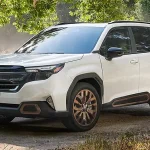
Car designers are increasingly emphasizing aesthetics and efficiency when creating cars. Modern vehicles are sleeker and streamlined, which is good news for consumers as well as engineers and manufacturers.
Automakers are constantly exploring innovative methods of streamlining production processes and cutting costs, while meeting consumer demands for eco-friendly cars that complement their lifestyles. By using sustainable materials they’re meeting consumer expectations.
Lighting Technology
Lighting technology has become a cornerstone of car design. Today’s vehicles feature adaptive LED headlights which adapt their beam according to road conditions, helping reduce road glare and improve visibility, particularly during inclement weather. Furthermore, some cars feature ambient lighting which changes color depending on what music is playing; such features have become an essential feature.
Aggressive headlights have quickly become a trendy feature of automotive design. Featuring thin light strips to add style, aggressive headlights can give a vehicle’s exterior an eye-catching and distinctive appearance that sets it apart from others models. Sports cars may opt for this style.
Car designers must not only consider new technologies when creating cars; they must also factor in safety and manufacturing processes into their designs, which may impact cost and feasibility. Manufacturers must meet regulatory standards; designers must use creativity to meet consumer demands while potentially recreating iconic designs.
Sustainable Materials
Engineers are turning towards more sustainable materials for automobile production. Engineers have taken an interest in creating vehicles made out of 100% eco-friendly products and fully recyclable parts, such as those found in new electric vehicles. Students in Eindhoven created one such car made entirely out of recycled material including unsorted household waste inside its interior, hard plastic from old televisions and appliances on its exterior and seat cushions filled with coconut and horsehair as filling.
Car manufacturers are exploring natural fibres as a means of improving the sustainability of their vehicles, using plant cellulose fibres in upholstery designs as an eco-friendly replacement to traditional polyurethane foam that offers better comfort to passengers while simultaneously helping reduce carbon emissions and decreasing vehicle weight.
Personalized Interiors
Every design trend comes with an expiration date, yet some elements seem to defy time and remain relevant over time. From horizontal taillamp bars to black wheels, there are certain design features which stand the test of time and remain highly popular today.
Automobile designers are increasingly exploring eco-friendly materials and construction techniques in order to produce vehicles that combine style with efficiency. One example is the all-electric British hypercar Link, featuring an aerodynamic body and innovative lighting technology to reduce fuel consumption and enhance performance.
Link also illustrates this trend of more personalized cars by featuring an array of cameras that provide real-time road information on its windshield to keep drivers informed and safe. Furthermore, its wireless communication allows it to link with internet and smart home technologies – increasing automakers’ target audiences while offering consumers an enjoyable digitally connected driving experience that makes each journey all the more fulfilling.
Digital Marketing
Industry players are currently facing numerous changes, from sustainability and electrification to the introduction of Asian brands. Design has taken on an ever-greater role in shaping vehicles – not simply in terms of efficiency or functionality but as an artistic and technological expression as well.
Engineers continue to expand the capabilities of cars by adding features. One popular example is regenerative brakes, a technology which captures energy released when stopping a vehicle and uses it again when driving again, thus helping reduce emissions, fuel consumption, and costs associated with ownership of cars.
Other trends include heads-up displays that project information onto windshields to help drivers focus on driving safely. Some of these systems also assist with navigation, safety and infotainment functions. Manufacturers are working towards 5G connectivity that will enable their vehicles to communicate with one another and the outside world – giving drivers more personalized services while simultaneously increasing driver safety.







